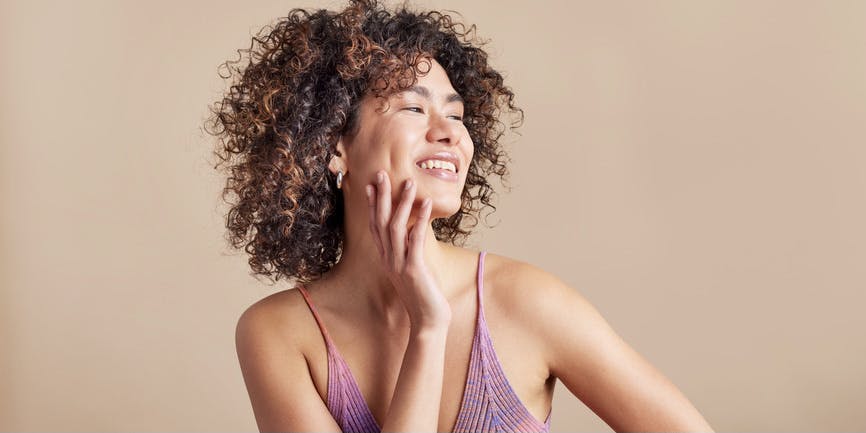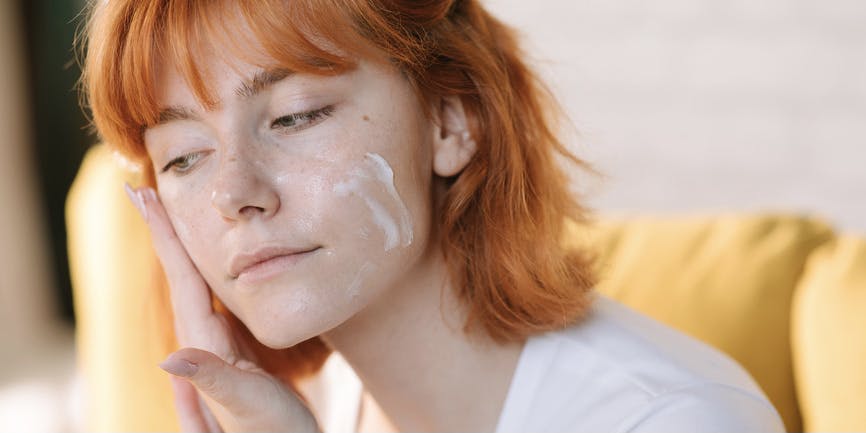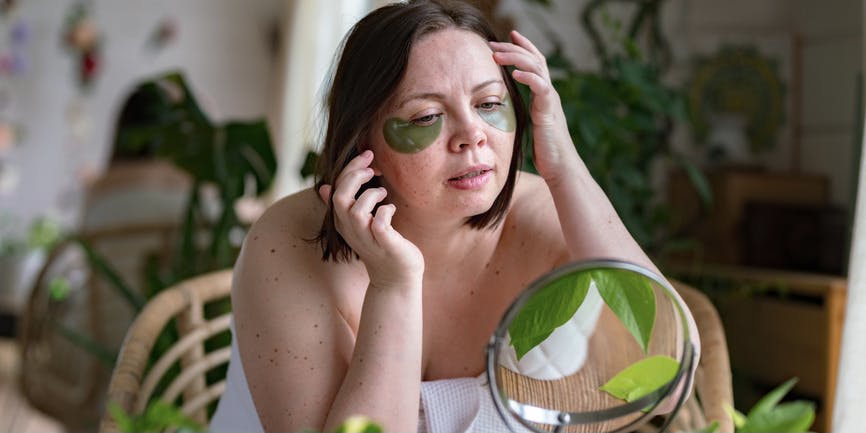
How to treat the 4 types of rosacea

Topics
Key Points:
- Rosacea causes skin redness or darkening, flushing, bumps or pus-filled pimples. It usually affects the skin on the face. But it can also affect the eyes, back or chest.
- You can reduce rosacea flares by following a good skin care routine and avoiding triggers. It’s also important to use a broad-spectrum SPF every day.
- The most common treatments for rosacea include topical medications, oral antibiotics and acne medications. Laser therapy is an option for severe cases.
Rosacea is a common skin condition that usually affects the skin on your face. It can look different depending on what type you have and how severe it is.
There are four main kinds of rosacea. Some cases involve general redness on the face. Another causes pus-filled pimples or solid red bumps. Others can affect the eyes or even cause skin deformities.
Which rosacea treatment is best? It depends on your symptoms and where they occur.
What does rosacea look like?
In people with fair skin tones, rosacea causes redness on the face—especially the nose, chin, forehead and cheeks. In people with darker skin tones, it creates areas of darker skin or a dusky brown coloring. It can also present on the scalp, eyes, back and chest.
In the early stages, it may look like blushing or flushing that comes and goes. It can also look like a blush or sunburn that doesn’t go away. Sometimes, you can see small visible blood vessels on the face or under the skin.
Symptoms can intensify over time. Without treatment, it can cause solid red bumps and pus-filled pimples. The skin can sometimes feel tight or dry along with an itching, stinging or burning sensation. It can also cause the nose to become lumpy and swollen (rhinophyma).
Rosacea can also affect the eyes. This causes irritation along with a bloodshot, watery appearance. This is known as ocular rosacea.
What are the 4 types of rosacea?
It’s important to know what type of rosacea you have so you can get the most effective treatment.
Erythematotelangiectatic: This involves general redness or flushing in the central part of the face. (The cheeks, nose and middle forehead.) It may involve other parts of the body. But it rarely affects the eyes. You might also notice small blood vessels under the skin. This type is commonly treated with topical creams or gels.
Papulopustular: Patients experience pustules (pus-filled pimples) or papules (small, solid bumps). In severe cases, it can cause long-term swelling. This type usually benefits from a topical antibacterial cream combined with oral antibiotics.
Phymatous: With this kind of rosacea, men (more than women) may have thickened skin and large pores on the ears, nosechin or forehead. It may also create skin deformities. The medication Ivermectin can help. But surgery to remove extra tissue may be required, too.
Ocular: This causes eye irritation, burning, stinging or feeling like you have something in your eye. The eyes might look watery or bloodshot. It can also lead to styes or vision problems. Artificial tears and lid care are an important part of treatment.
How to treat rosacea
The right rosacea treatment will depend on symptoms and severity. Some people can manage their symptoms by avoiding triggers and following a sensitive skin care routine. Others need topical rosacea medicine to control flushing or outbreaks.
Topical treatments are commonly combined with oral medications to help get symptoms under control. Rosacea pills can help with moderate or severe bumps or pimples.
Common topical treatments include:
- Brimonidine (Mirvaso) and Oxymetazoline (Rhofade): These medications constrict the blood vessels under the skin, which reduces flushing. The effect is temporary, though, so these medications need to be applied regularly to keep symptoms under control.
- Azelaic acid (Azelex, Finacea), Metronidazole (Metrogel, Noritate, others) and Ivermectin (Soolantra): These medicines are used to control pimples related to mild rosacea. Metronidazole and azelaic acid take anywhere from 2-6 weeks to see improvements. Ivermectin may take more time. But it can lead to long-term results.
Common oral treatments include:
- Oral antibiotics: Medications like Doxycycline (Oracea) can improve moderate to severe bumps and pimples. They can also help with ocular rosacea.
- Oral acne medications: Isotretinoin rosacea treatment can help treat related severe acne. It’s associated with severe birth defects. So it shouldn’t be used during pregnancy or if there’s a risk of becoming pregnant.
Other treatments include:
- Laser therapy may help those with severe cases. Vein treatment can remove visible blood vessels and veins on the face. It can also treat extensive redness and nose disfigurement.
- Those with ocular rosacea may feel better using artificial tear eye drops. Oral tetracyclines can also help. Ciclosporin drops may help those with moderate or severe cases.
How to prevent rosacea
There are steps you can take at home to help keep symptoms under control.
- Avoid triggers. Common triggers include spicy foods, hot drinks, extreme temperatures, sun or wind, stress, alcohol consumption and exercise. Certain medications and skin care products may trigger a flare, too.
- Use sunscreen. UV light can make symptoms worse, so it’s important to use broad-spectrum SPF every day.
- Follow a good skin care routine. Wash your skin twice a day with a non-soap cleanser. Follow up with a moisturizer. Avoid products that could irritate the skin like camphor, menthol or alcohol. And choose fragrance-free products.
You can also treat mild redness with color correcting tinted moisturizers that have a green-colored base. Be sure to apply your topical treatment first, then your sunscreen. The best makeup for rosacea will cover redness, contain sunscreen and have no fragrance. Put this on last.
How to find relief with a rosacea prescription
Without treatment, rosacea can cause permanent redness, skin thickening or eye problems. Dr. B offers trusted prescription treatments for rosacea. Connect with a board-certified medical provider to find out which treatment is right for you.
Sources:
Alexis, A. F., et al. (2019). Global epidemiology and clinical spectrum of rosacea, highlighting skin of color: Review and clinical practice experience. Journal of the American Academy of Dermatology. 80(6), 1722–1729.e7.
Farshchian, M. et al. (2022). Rosacea. StatPearls.
Kang, C. N., et al. (2021). Rosacea: An update in diagnosis, classification and management. Skin therapy letter, 26(4), 1–8.
Keri, J. E. (2022, February). Rosacea - Dermatologic Disorders. Merck Manuals Professional Edition. Retrieved April 5, 2023.
Rivero, A. L., et al. (2018). An update on the treatment of rosacea. Australian Prescriber. 41(1), 20–24.
Topics
Sign up for the free Dr. B newsletter for a weekly report on the latest in healthcare + research-based advice for staying healthy and mentally well.


